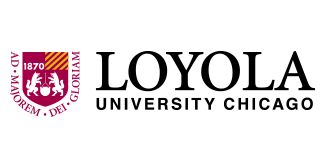Major
Molecular Biology
Anticipated Graduation Year
2022
Access Type
Restricted Access
Abstract
Phosducin-like protein 3 (PhLP3) has been shown to possess redox activity, and it is believed to function as a co-chaperone in the folding of cytoskeletal proteins. PhLP3 is very well-conserved across the animal kingdom from humans to Drosophila melanogaster, wherein its homolog is CG4511. CG4511 is highly expressed in the Drosophila testis, and thus we began to investigate a potential role for CG4511 in the context of spermatogenesis. A P-element insertion in the 5’ UTR of CG4511 leads to a decrease in its expression, infertility in males homozygous for the P-element insertion, and testes that fail to produce mature sperm. Actin-based individualization cones are absent, as nuclei fail to fully elongate and appear scattered throughout the syncytium rather than aligning at the anterior tip of the syncytium. The dense complexes vital for nuclear elongation appear reduced in size in CG4511 homozygous mutants. Additionally, seminal vesicle size is reduced by 32% from that of w1118 seminal vesicles. The seminal vesicles lack mature sperm, indicating an arrest in spermiogenesis. Excision of the P-element insertion restores male fertility, spermiogenesis, and seminal vesicle size. Our results, thus, suggest the importance of CG4511 in the context of spermiogenesis. Given the hypothesized role of PhLP3 as a co-chaperone for cytoskeletal proteins, we hypothesize that CG4511 functions to regulate the microtubule dynamics that are vital for the nuclear-shaping process during spermiogenesis, as well as for the alignment of the spermatids to the anterior tip of the syncytial cyst.
Faculty Mentors & Instructors
Jennifer Mierisch, Assistant Professor, Loyola University Chicago
Supported By
National Science Foundation
Creative Commons License

This work is licensed under a Creative Commons Attribution-Noncommercial-No Derivative Works 3.0 License.
Drosophila PhLP3/CG4511 is Required for Spermiogenesis
Phosducin-like protein 3 (PhLP3) has been shown to possess redox activity, and it is believed to function as a co-chaperone in the folding of cytoskeletal proteins. PhLP3 is very well-conserved across the animal kingdom from humans to Drosophila melanogaster, wherein its homolog is CG4511. CG4511 is highly expressed in the Drosophila testis, and thus we began to investigate a potential role for CG4511 in the context of spermatogenesis. A P-element insertion in the 5’ UTR of CG4511 leads to a decrease in its expression, infertility in males homozygous for the P-element insertion, and testes that fail to produce mature sperm. Actin-based individualization cones are absent, as nuclei fail to fully elongate and appear scattered throughout the syncytium rather than aligning at the anterior tip of the syncytium. The dense complexes vital for nuclear elongation appear reduced in size in CG4511 homozygous mutants. Additionally, seminal vesicle size is reduced by 32% from that of w1118 seminal vesicles. The seminal vesicles lack mature sperm, indicating an arrest in spermiogenesis. Excision of the P-element insertion restores male fertility, spermiogenesis, and seminal vesicle size. Our results, thus, suggest the importance of CG4511 in the context of spermiogenesis. Given the hypothesized role of PhLP3 as a co-chaperone for cytoskeletal proteins, we hypothesize that CG4511 functions to regulate the microtubule dynamics that are vital for the nuclear-shaping process during spermiogenesis, as well as for the alignment of the spermatids to the anterior tip of the syncytial cyst.



Comments
Please contact me at cpetit@luc.edu if issues arise while trying to view the video. Thank you!